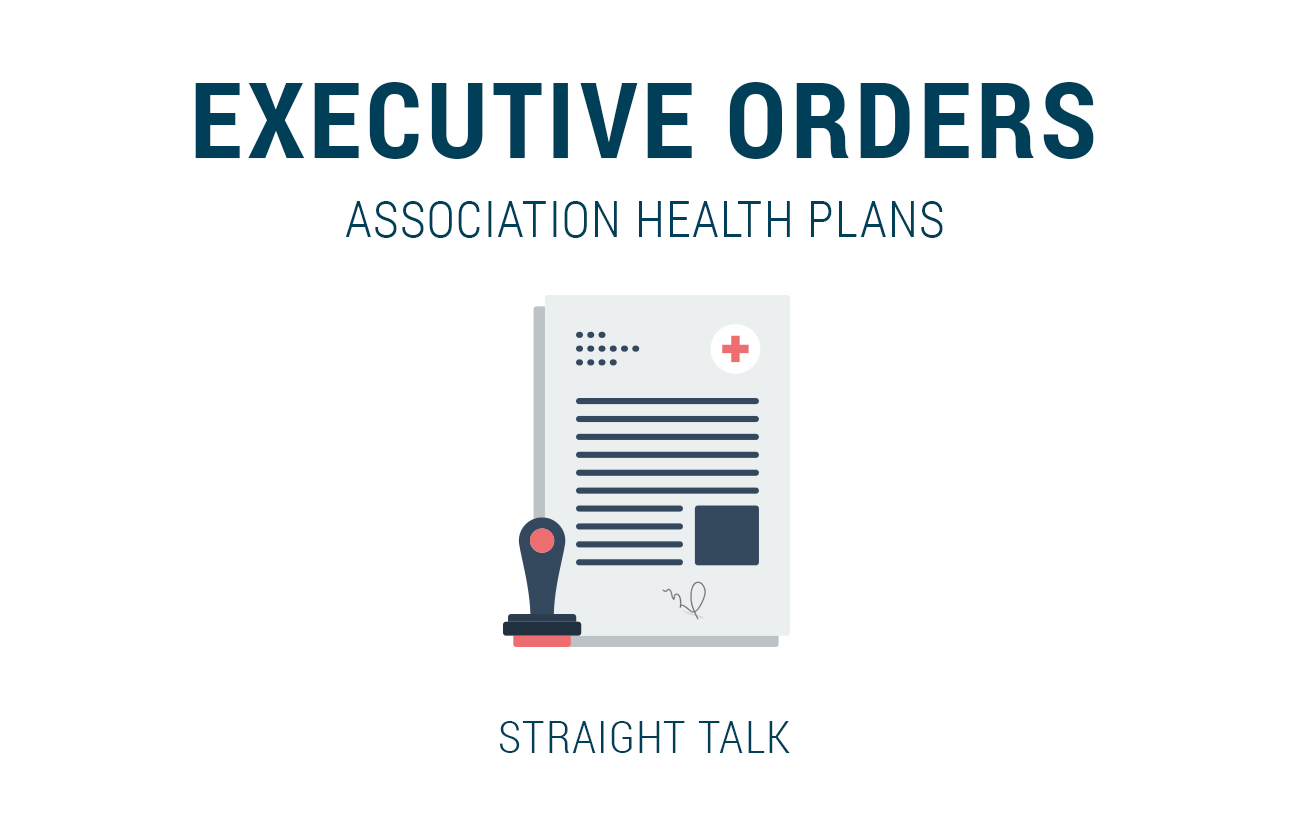I promised you I would take you more in depth on parts of President Trump’s Executive Order on healthcare. Today we look at Association Health Plans.
Did you ever wake up in the morning with a whiz-bang idea to change the world?
You know that feeling — you bounce out of bed, your brain is humming. As you make your coffee, you can visualize your debts disappearing and your bank account brimming with new-found wealth.
Ah… that’s what I’m talking about!
I’m sure the first guy who thought the following really thought he had something: “Hey, very large companies get their health insurance cheaper than smaller companies. What if we could get a whole bunch of small companies together and make them look like a bigger company and get a better deal on our health insurance?!” And thus, the Association Health Plan concept was born.
My Great-Grandfather’s Co-op
The idea is really old and really simple. In fact, my grandmother often told the story of how her father, Immanuel Hidalgo, Sr., a sugar cane farmer in Ascension Parish, got angry about “city slicker” merchants in New Orleans and Baton Rouge overcharging the farmers in Ascension Parish for what they needed — supplies for their farms, seeds, plows, everything!
In fact, Old Immanuel got so mad that he borrowed an old English idea and decided he would build a co-op store. First, he invited his next-door neighbors, the Bertauts, over for dinner in 1890 to discuss the idea (yes, a young Bertaut married a young Hidalgo in 1928, and here I am!). Before they were done, they had reached out to more than 50 local landowners and they all agreed to put up some money and start their own store, which let them get bulk-buying rates.
Buying in volume from the merchants in New Orleans and Baton Rouge was the only thing that got them through the Great Depression. Those farms are gone now (the Sunshine Bridge cuts their land in half), but the idea was sound then and feels sound now. Get a bunch of smaller customers to act as a single unit, buy in volume and get better prices.
This works in many places and at many times. But when this concept has been done to purchase health insurance over the years, some barriers have disabled the effort. The Executive Order that the president recently issued will have to point the way to overcoming these barriers.
“Mike, what’s the problem? Seems like a solid plan to me!”
I agree; it feels solid to me too. But, as is usually the case, healthcare and health insurance do not follow the same rules as other, more sensible businesses. Associations have to overcome the “controlled group” rules and the “cherry picker” effect. Let me explain.
Controlled Groups
Imagine we have a group of 50 companies, each with an average of 20 employees. If we all get together and buy health insurance as a group, we should be able to get the same deal as a 1,000-person company, right? To do that, the Internal Revenue Service (IRS) has to treat these 50 companies as if they had a common owner, just for the purpose of health insurance. This is what the IRS calls a “controlled group.”
Would this work? Maybe, before the ACA. But now, under ACA underwriting rules, none of these 50 companies could buy health insurance that is priced based on the health of their members. We are not allowed to set different, better prices for healthier companies with fewer than 50 employees. It’s illegal. So if an Association wants to offer something different, they will have to get the federal government to give them a pass on the rules that apply to every other company buying insurance. Will they do that? Time will tell.
Also keep in mind if a controlled group of companies with 1,000 employees purchases insurance, the group would most likely self-fund the enterprise. That would give them a ton of freedom on things like benefit design and how they offer the coverage to their employees. It would free them from a raft of federal regulations that drive up their costs. If they had a “healthy” year, they could keep the savings. If they had a “sick” year, they could divvy up the expenses. That employer would also buy reinsurance to cover very high-cost claimants until the second year of the illnesses, where they would likely have to cover 100% of the costs. But that’s a legal entity with common ownership. Most large employers that have many employees within that one business buy their health insurance this way. The problem with associations is that they are clearly not “controlled groups.”
So, to make this work out, the executive order would need to give associations permission to act like all the companies within that association are owned by the same people in order to get those advantages. That means suspending the IRS code for health insurance. So, that’s the first thing this order has to get exactly right.
Cherry Picking
“Mike, that makes sense. But what’s this “Cherry Picking” thing?”
Imagine in Old Immanuel’s day, fellow co-op Farmer Abadie (another relative of mine) had a brother-in-law (Melancon) in the fertilizer business, and he was willing to sell Farmer Abadie his fertilizer at his cost. But Melancon couldn’t afford to sell at cost to all 50 farmers in the co-op because he would lose too much money. Abadie would be crazy not to take that deal, but it would damage the co-op store because Abadie’s fertilizer volume goes away when the store goes to buy fertilizer. That drives the price up a bit for the rest of the farmers in the co-op.
Now visualize the same thing happening to the health insurance association. Some companies will always have healthier employees with lower costs than others. That company might be able to get cheaper insurance if they leave the association and buy on their own. Since these companies are affiliated, but not legally owned together, associated companies are free to leave when they get a better deal.
And historically, they have done just that. And when those healthier employees leave the group, the whole group gets more expensive. This forces other healthy groups to go shopping, and before you know it, the least-expensive companies have been “cherry picked” out of the association, leaving only the most expensive behind.
How do you create an association that is immune to “cherry picking”? I have no idea, but that’s the next barrier the executive order will have to overcome.
The concept of association health plans has been around a long time, and I think they are a solid idea. With the permission of the insurance commissioner here in Louisiana, we have supported a few of them over the years here at Blue Cross and several have been successful. Many more, however, have failed, mainly for the reasons I’ve just outlined.
What are the keys to success? From what I’ve seen, the association health plans that have made it offer their members strong support services and tools to make business easier for owners of smaller companies. That means people have a draw besides cheaper health insurance to be part of – and remain in – the association. How Straight is that?





I agree!